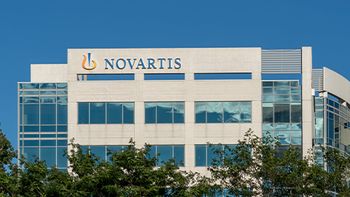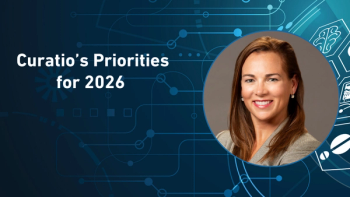
- Pharmaceutical Commerce - September/October 2010
The Five Things We Need to Do to Re-invent Commercial Operations
By running Commercial Operations like a stand-alone business, executives can sharpen their focus on strategy, tactics and overall performance
A fundamental shift is under way throughout the pharmaceutical industry — we can all agree on that. What used to take decades to change and years to measure now seems to happen at the speed of light. Every functional area in almost every pharmaceutical company is re-examining the way it does business and making changes to meet the demands of the industry’s “new normal.” Some groups will thrive in this environment, others will just survive.
Operations executives of the past became somewhat accustomed to being able to do the same thing year after year. It may sound trite, but it was always OK. Each year we became adept at running a little faster, doing more with a little less, and in the process started overloading our Operations organization with more of the same. Annual plans were mistaken for strategic plans and budgets were a fixed and finite way of getting the job done.
Traditionally, Commercial Operations executives have focused on Sales Operations and Marketing Sciences/Research. This domain has grown, however, as Marketing Operations functions, particularly Medical/Regulatory/Legal support, Speaker Logistics, Agency Management, Meetings and Conventions, have become more centralized for reasons of cost efficiency, compliance and consistency.
The explosion in digital promotions and focus on promotional compliance has also changed the landscape. TGaS Advisors has seen a growing recognition of the importance of a Commercial Operations organization that can effectively manage the increasing range of promotional activities. Many factors have sparked this change, including the “new commercial model” across all segments and sizes of pharmaceutical companies as well as the growing importance of managed care. In addition, companies saw the need for a broader promotional portfolio efficiently executed with rapid cycle times and a focus on performance-based metrics and measurements. Another factor requiring a stronger Commercial Operations organization is the growing importance of a consolidated view of increasingly complex compliance regulations, which differ by state, across business units and geographies as well as attention to detail in meeting oversight and reporting requirements.
In many pharmaceutical organizations, Commercial Operations reports to the head of Pharmaceutical Business Operations and is strategically positioned to provide comprehensive operational support and leadership across all business units and related staff organizations, including IT, Regulatory, Advocacy and Finance.
In that vein, we propose that heads of Commercial Operations begin to view their mission from a fundamentally different perspective, seeing themselves as leaders of their own commercial enterprise and becoming the CEOs of “Comm Ops, Inc.” We believe there are five keys that will enable CEOs of Commercial Operations groups to transition from a high-performing service bureau to a strategic business partner:
1. Be the CEO of Commercial Operations
2. Set a multi-year strategy
3. Select a few things where you want to be best-in-class
4. Embrace Managed Markets
5. Make performance metrics matter
Key #1:
Be the CEO of Commercial Operations: Imagine Operations is your own entrepreneurial venture!
Commercial Operations executives command tens of millions of dollars in budget and billions of dollars in influence. If they think of themselves as the CEOs of Comm Ops, Inc., they can begin to re-invent their organizations to be more entrepreneurial. As a “CEO” of this multi-million dollar business, you need to think of your expense budget actually as your “revenues.” So, imagine that instead of your multi-million budget being viewed as expenses, think about the budget as actually being your revenues — money you are being given by your customers to provide services.
What kinds of decisions would you make if this were truly your own entrepreneurial business? What would you “sell” to your customers? How would you turn a profit? What clients would you provide gold level service to and what customers might get bronze level? In this model you are not charged with spending money as much as you are with making money.
Here are some questions generated by this new type of CEO-thinking:
Would you treat a $500 million brand with growth potential the same as a $2-billion brand that has plateaued? What if the $2-billion brand still has 18 brand managers asking for support, while the $500-million brand has only six brand managers and is not capitalizing on the insights you are providing? As a CEO, would you mount a “hostile takeover” of the $500-million brand?
Should all Business Units and Field Forces receive the same levels of support? Does size really matter — or is it potential?
Would you put your best people on your biggest opportunities (i.e., Innovation), or are they being assigned to the biggest problems? Entrepreneurs put their best people on the front lines in areas like innovation, sales and service — not in project-based fire-fighting roles.
To re-invent the organization and the thinking, begin to think about Commercial Operations as your own business—one where you get to keep the profits while also working to make customers happy.
Key # 2:
Set a multi-year strategy
As many successful business leaders understand, the end—the long-term strategic goals of the company—are the place to begin. This is just as true for Commercial Operations. TGaS Advisors benchmark data indicate that only 30% of heads of Comm Ops develop multi-year strategies. Imagine that — seven out of 10 CEOs of Commercial Operations only have single-year plans!
As the CEO of Comm Ops, Inc., the commercial leader’s first job is to understand the company’s longterm strategy and think about it from an operational point of view. The next step is to work with each area to create a proactive multi-year operational strategy that supports company objectives. In some companies it may only be a two-year strategy while in others it may be three years. Anything beyond three years is probably a waste of time.
We encourage Operations executives to work from the outside in, setting strategic goals and priorities aligned to the broader commercial vision and strategy as a way to arrive, ultimately, at the best operational tactics.
Key #3:
Select a few things where you want to be best-in-class
As CEO of Comm Ops, Inc., one of the first decisions you must make is truly evaluating what your products and services are and choosing which ones you want to be great at. You can choose your “best-sellers” (high-volume services) and/or the services that provide the greatest competitive advantage (best profits). Being great at everything is probably not the best decision, despite Mom and Dad’s lectures on getting straight-A’s.
Where does the organization want to be great? Is there a brand where “good” support is more than adequate? Is there a specific field force where you have to be best in class? Should you strive to get involved in contract ROI?
Making this determination early on means that Comm Ops can allocate resources strategically, rather than try to fulfill every request regardless of importance or profitability to the company. It enables an objective assessment for why one request may be front-burnered while another is scaled back. Once you have decided your priorities, you’ll need to set some operating parameters with your internal customers and work diligently to communicate them.
Here are some examples of things you’ll need to consider:
Service level agreements:
Calibrating expectations
The first step in understanding what your customers want is to ask them, and then document it in a simple service level agreement (a contract between you and your
customer). Think about it from a CEO
perspective. If you have a client that is asking you to spend $5 million to deliver services to them, wouldn’t you want a contract before you started spending your money? Wouldn’t you want to understand and capture what they (and you) can expect? Service levels should not be viewed as bureaucratic documents or as “politics.” They are very simple internal contracts between two parties — involving millions of dollars.
Service levels also help Operations become more of a strategic partner to company management, allocating resources where it makes the most sense — e.g., more support for growth products than for those at mature stages. Elements of a service level agreement generally include such items as key performance indicators, when they make sense and when they don’t, levels of analytics, cycle time, costs and other features.
Fig. 1 shows that 33% of the 32 companies in the TGaS Advisors 2010 State of Commercial Operations Benchmark now have service level agreements in Sales Operations.
Chargebacks: “This Will Cost You”
Evaluate sending your client a “bill.” Even if they are notional at the outset, instituting a system of chargebacks for Operations services reinforces the concept that services have economic value and should be used strategically to support profitability rather than in random fashion.
“Comm Ops, Inc.” accounts for how resources are expended against revenue (budget), setting priorities according to profitability/company strategy. Operations leaders who think like heads of businesses can use chargebacks to bring a level of discipline and recordkeeping into their operations, figuring out the cost of services and delivering value for that cost.
This also leads to figuring out more efficient and creative ways of meeting Marketing, Sales and Managed Markets needs based on available resources and priorities.
Flexible resourcing
When you think about it, just about everything can be outsourced. But a smart Comm Ops, Inc. CEO would evaluate the strategic imperatives of the company and make sourcing decisions based upon those imperatives. Benchmark data show that the industry is moving toward greater outsourcing (Fig. 2).
Many companies are making decisions to either in-source or out-source activities for multiple reasons, including cost reduction, service level improvement, gaining competitive advantage and/or leveraging greater innovation. A combination of performance or service level metrics (see below), customer satisfaction and cost savings achievements are mandatory for evaluating the impact of alternative sourcing decisions.
Key #4:
Embrace managed markets
Historically, Operations people came from field sales, market research and, in some cases, finance. Very few Operations folks seem to have come from Managed Markets. Today’s challenges, however, call for a broader range of talent, and with Managed Markets expanding and contract rebates beginning to add up to more than R&D spending, it is an ideal time to change the talent pool for the future.
One of the most important areas of focus in 2010 for Operations leaders is Managed Markets (Fig. 3). Rethinking how Managed Markets fits into your Operations model is a good example of what it means to align Operations with larger company strategy. (See TGaS Advisors “Future of Managed Markets: Aligning Resources to Customers,” at www.tgas.com). One last element in the talent equation is taking on the challenge of genuinely addressing career paths for your Operations leaders. The best people need to see opportunities for advancement, and the right kind of talent must be nurtured and developed. It may not be the usual “up the ladder” approach, but rather a “winding road” that prepares future leaders with broader, more diverse skills and experience better suited to the complexities of a changing industry.
Key #5:
Make performance metrics matter
CEOs, and their boards of directors, like to know what value they are getting for their money. Comm Ops CEOs should be no different. Every year, Commercial Operations teams invest money in new initiatives, new data sets, new approaches to analysis, new relationship marketing tools, new training programs and more. How is the expected value of these investments determined? Once implemented, what decisions are made based on the new capability? What is gained based on the new capability or services? Is it worth making the same investment in the future?
People manage what they measure. Operations teams require well thought-out measurements to gain a sense of what’s working and what isn’t against key objectives. These key performance indicators, or KPIs, can be a blend of metrics and higher-level evaluations.
For example, a company may have invested in systematically capturing speaker program attendance information and in evaluating the impact of the programs. By making recommendations for targeting physicians for attendance, leveraging highly impactful topics and/or speakers and/or using alternative logistics or meeting formats, Commercial Operations can have a real impact on profitability. By measuring the hypothetical impact (assuming recommendations are implemented) and the actual impact (speaker program ROI where recommendations are actually implemented), Comm Ops CEOs have a clear picture of the value of the investment. They also have information that helps enforce use of the new information or capability.
Not all activities can or should be measured, and approach to measurement will vary across functions within Commercial Operations. The Comm Ops CEO has to make informed decisions about where to focus systematic evaluation of impact, with a bias toward measuring areas where investment is significant, where impact is widespread, where conventional wisdom needs to be challenged and/or where opinions vary widely on perceived value.
Think like a CEO who wants bottom-line information. Find ways to synthesize the right metrics and impact assessments, report on them religiously, use them to improve your operations and use them to illustrate the value of Commercial Operations for your boss and your internal clients.
Don’t be shy about publishing those performance metrics for all your customers to see. Recognizing where you are exceeding expectations (revenues and service) and where you still need to progress are good “CEO” practices. We found that the Commercial Operations leaders we interviewed are creating these “report cards” 33%-50% of the time.
“Comm Ops, Inc.”: The Path Forward
In our current environment, strategic thinking may seem like a luxury, but make no mistake — it is a necessity. Leading with a CEO orientation, investing time to create a multi-year strategy for proactive insights and support for your company, picking a few areas where you will be best in class, enabling the integration of Managed Markets and creating practical Commercial Operations performance metrics are essential to you and your team’s success. Commercial Operations leaders who do not embrace these imperatives will risk putting their companies at a competitive disadvantage and marginalizing their own organizations. PC
About the Authors
Stephen E. Gerard is Managing Partner and Founder of TGaS Advisors (East Norriton, PA; www.tgas.com). V. James Mercante is a Partner in the firm. Ranked in the top 50 among US Business Products & Services companies by the Inc. 500, TGaS Advisors is the leading benchmarking and advisory services firm serving pharmaceutical Commercial Operations organizations. The TGaS Advisors roster includes the top 10 and the majority of the top 50 pharmaceutical companies with operations in the US market. The firm provides the only comprehensive series of benchmarking solutions and advisory services for objectively improving the strategy and effectiveness
Articles in this issue
about 15 years ago
National illicit-drug use rose by 9% in 2009, say fedsabout 15 years ago
ISPE issues a white paper on supply chain securityover 15 years ago
Medco Will Acquire United BioSource Corp. to Guide Safe andover 15 years ago
Reverse Logistics Providers Upgrade Their Service Capabilitiesover 15 years ago
The Path Ahead for Enterprise ComputingNewsletter
Stay ahead in the life sciences industry with Pharmaceutical Commerce, the latest news, trends, and strategies in drug distribution, commercialization, and market access.





